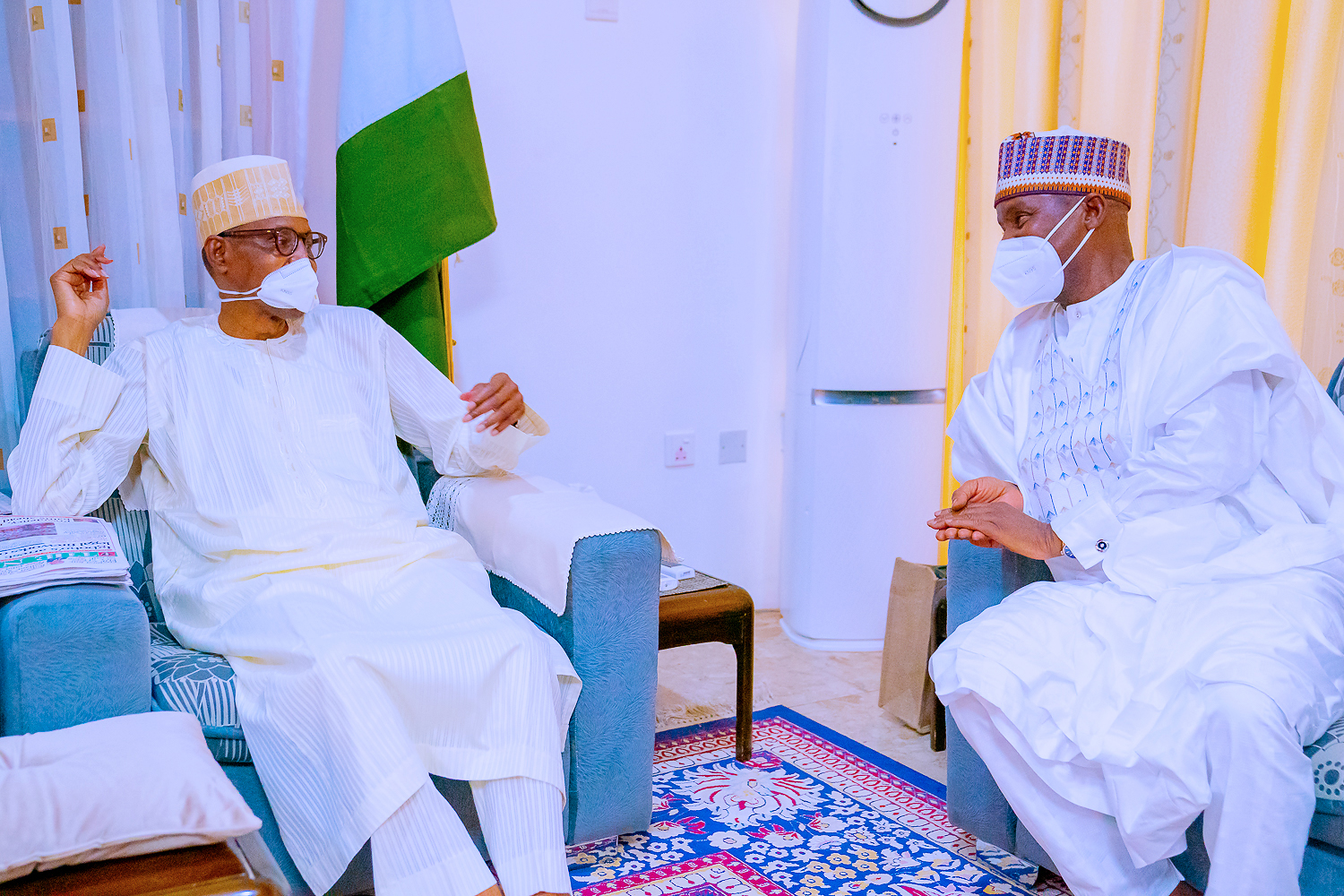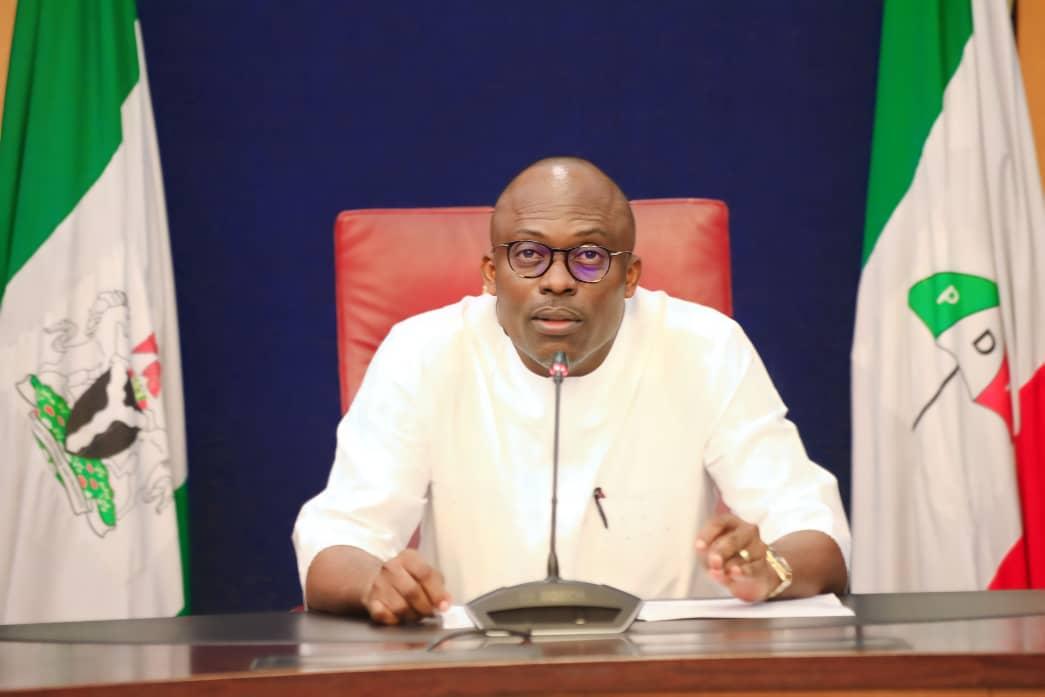Editorial
Nigeria’s Growing Debt Burden

Thursday, July 15, 2021, the Nigerian Senate approved two new foreign loans of $8.325 million and
€490 million respectively. That has raised a lot of questions among many stakeholders in the country, who have equally considered the approval as a bad move in the management of the already battered economy, especially at this period of torturous debt service compulsion.
The loans are said to be part of the Federal Government’s 2018-2020 external borrowing plan. It was ratified after the Senate considered the report of the Senate Committee on Local and Foreign Debt. In May this year, President Muhammadu Buhari asked the National Assembly to endorse the loan for funding various “priority projects” in the country.
Earlier, the Senate had approved $1.5 billion and €995 million respectively. The $1.5 billion was to be sourced from the World Bank for the financing of critical infrastructure across the 36 states of the federation under the States Fiscal Transparency, Accountability and Sustainability (SFTAS) programme and Covid-19 action recovery plan.
Similarly, the €995 million was to be procured from the Export-Import Bank of Brazil to finance the Federal Government’s Green Imperative project to enhance the mechanisation of agriculture and agro process to improve food security. These are aside several other loans taken by the administration since inception in May 2015.
Statistics from the Debt Management Office (DMO) on Nigeria’s liability portfolio over the last six years show how the accumulation has progressed hazardously. According to the DMO, Nigeria’s total debt as of June 30, 2015 (the year President Muhammadu Buhari took over) stood at N12.12 trillion. As of December 31, 2020, the country had a debt portfolio of N32.92 trillion. The latest DMO statistics, covering the first quarter of 2021, indicated that the debt portfolio had increased again to N33.10 trillion.
In addition, the Federal Government also incurred another N10 trillion in overdrafts with the Central Bank of Nigeria (CBN). This overdraft, which may also be provided by printing currency, has been reconditioned to be repaid over 30 years. We wonder what the managers of the economy have up their sleeves when they take on these liabilities which have serious implications not only for the present, but also for the future generations of Nigerians.
These allegations of printing of funds that have followed a trend across the country in recent times may be seen as apparently corroborated by this huge N10 trillion owed by the CBN. The CBN may have always relied on printing money to meet the government’s overdraft demands.
The unfortunate and highly impoverished argument still put forward by the government and proponents of increased borrowing is the country’s debt-to-GDP ratio is still sound and below 40 per cent. However, they lose sight of the fact that GDP does not pay the debt, but incomes do. GDP only reflects the size of the economy and not that a mechanism has been put in place to service the loan when it becomes due.
What the Buhari government has done over the past six years, with its incompetent economists, is reckless borrowing, and has obviously borrowed beyond its repayment capacity. That is why the Federal Government is in trouble as far as servicing the debt is concerned. It recently admitted this much, claiming it spent N1.8 trillion on debt servicing from its N1.84 trillion revenues in the first five months of 2021 (January to May).
Thus, the debt-to-revenue ratio of the Federal Government, a key measure of debt sustainability, stands at 97.8 per cent over the reviewed period. How outrageous is that? In 2016, the federal debt service amounted to only 44.6 per cent. But by 2020, the debt-to-revenue ratio had increased to about 84.8 per cent. That is why 33 per cent of the current 2021 budget is dedicated to paying down the debt.
As debts increase for payments, the strain on incomes increases. In the 2019 budget, for instance, over N2.1 trillion was set aside for debt servicing. Also, in the 2020 budget, N2.45 trillion was dedicated for debt repayments. That was close to 25 per cent of the budget. No country can achieve development with such enormous debt settlements.
The huge amount spent on debt servicing leaves the Buhari government with little money for infrastructure. That is why it takes more loans and print money to finance the cost of personnel, pensions and capital expenditures. Since printed currency also forms part of the debt of any government, we are concerned with the staggering way the CBN has printed money over the last six years and handed it to the Federal Government. It increased sharply from N2.2 trillion printed in 2016 to an estimated N10 trillion by the end of 2020.
There is no use borrowing for projects such as railways and airports. No sane government continues to invest in such infrastructure. Investments in areas like that and many others should be led by the private sector while the government creates an enabling environment. Public funds should be expended on health, education and social welfare, not on areas better managed by the private sector.
Nigerians have always been bombarded by constant requests for loans from the President. Such loans have become too numerous and most well-meaning citizens have called for an end to the alarming tendency to incur loans infelicitously. The nation already has a huge debt burden and must not permit this situation so far aggravated by the Buhari administration.
Time and time again, the current government, aided by an implacable legislative assembly proud of its docility, has invoked various excuses to justify its borrowing frenzy. Sadly, the administration does not show creativity when it comes to reducing governance costs and consolidating the revenue base. It is all about here and now: it does not think of the future. The fiscal situation of the country is disastrous and disheartening, and it is time for the government to change course.
Editorial
Strike: Heeding ASUU’s Demands

Editorial
Making Rivers’ Seaports Work

When Rivers State Governor, Sir Siminalayi Fubara, received the Board and Management of the Nigerian Ports Authority (NPA), led by its Chairman, Senator Adeyeye Adedayo Clement, his message was unmistakable: Rivers’ seaports remain underutilised, and Nigeria is poorer for it. The governor’s lament was a sad reminder of how neglect and centralisation continue to choke the nation’s economic arteries.
The governor, in his remarks at Government House, Port Harcourt, expressed concern that the twin seaports — the NPA in Port Harcourt and the Onne Seaport — have not been operating at their full potential. He underscored that seaports are vital engines of national development, pointing out that no prosperous nation thrives without efficient ports and airports. His position aligns with global realities that maritime trade remains the backbone of industrial expansion and international commerce.
Indeed, the case of Rivers State is peculiar. It hosts two major ports strategically located along the Bonny River axis, yet cargo throughput has remained dismally low compared to Lagos. According to NPA’s 2023 statistics, Lagos ports (Apapa and Tin Can Island) handled over 75 per cent of Nigeria’s container traffic, while Onne managed less than 10 per cent. Such a lopsided distribution is neither efficient nor sustainable.
Governor Fubara rightly observed that the full capacity operation of Onne Port would be transformative. The area’s vast land mass and industrial potential make it ideal for ancillary businesses — warehousing, logistics, ship repair, and manufacturing. A revitalised Onne would attract investors, create jobs, and stimulate economic growth, not only in Rivers State but across the Niger Delta.
The multiplier effect cannot be overstated. The port’s expansion would boost clearing and forwarding services, strengthen local transport networks, and revitalise the moribund manufacturing sector. It would also expand opportunities for youth employment — a pressing concern in a state where unemployment reportedly hovers around 32 per cent, according to the National Bureau of Statistics (NBS).
Yet, the challenge lies not in capacity but in policy. For years, Nigeria’s maritime economy has been suffocated by excessive centralisation. Successive governments have prioritised Lagos at the expense of other viable ports, creating a traffic nightmare and logistical bottlenecks that cost importers and exporters billions annually. The governor’s call, therefore, is a plea for fairness and pragmatism.
Making Lagos the exclusive maritime gateway is counter productive. Congestion at Tin Can Island and Apapa has become legendary — ships often wait weeks to berth, while truck queues stretch for kilometres. The result is avoidable demurrage, product delays, and business frustration. A more decentralised port system would spread economic opportunities and reduce the burden on Lagos’ overstretched infrastructure.
Importers continue to face severe difficulties clearing goods in Lagos, with bureaucratic delays and poor road networks compounding their woes. The World Bank’s Doing Business Report estimates that Nigerian ports experience average clearance times of 20 days — compared to just 5 days in neighbouring Ghana. Such inefficiency undermines competitiveness and discourages foreign investment.
Worse still, goods transported from Lagos to other regions are often lost to accidents or criminal attacks along the nation’s perilous highways. Reports from the Federal Road Safety Corps indicate that over 5,000 road crashes involving heavy-duty trucks occurred in 2023, many en route from Lagos. By contrast, activating seaports in Rivers, Warri, and Calabar would shorten cargo routes and save lives.
The economic rationale is clear: making all seaports operational will create jobs, enhance trade efficiency, and boost national revenue. It will also help diversify economic activity away from the overburdened South West, spreading prosperity more evenly across the federation.
Decentralisation is both an economic strategy and an act of national renewal. When Onne, Warri, and Calabar ports operate optimally, hinterland states benefit through increased trade and infrastructure development. The federal purse, too, gains through taxes, duties, and improved productivity.
Tin Can Island, already bursting at the seams, exemplifies the perils of over-centralisation. Ships face berthing delays, containers stack up, and port users lose valuable hours navigating chaos. The result is higher operational costs and lower competitiveness. Allowing states like Rivers to fully harness their maritime assets would reverse this trend.
Compelling all importers to use Lagos ports is an anachronistic policy that stifles innovation and local enterprise. Nigeria cannot achieve its industrial ambitions by chaining its logistics system to one congested city. The path to prosperity lies in empowering every state to develop and utilise its natural advantages — and for Rivers, that means functional seaports.
Fubara’s call should not go unheeded. The Federal Government must embrace decentralisation as a strategic necessity for national growth. Making Rivers’ seaports work is not just about reviving dormant infrastructure; it is about unlocking the full maritime potential of a nation yearning for balance, productivity, and shared prosperity.
Editorial
Addressing The State Of Roads In PH

-

 Business2 days ago
Business2 days agoNCAA To Enforce Zero-debt Rule By 2026 ……….As Airlines Face Compliance Sanctions
-

 Politics5 days ago
Politics5 days agoReps Ask FG To Curb Arbitrary Rent Hike Nationwide
-
Rivers2 days ago
Shippers Council moves To Enhance Service Delivery At Nigerian Ports
-

 Oil & Energy2 days ago
Oil & Energy2 days agoEkpo, , Mshelbila Elected Gas Exporting Countries Forum Chiefs
-

 News2 days ago
News2 days agoTinubu commissions seven new projects at Unilorin
-
Opinion5 days ago
Fuel Subsidy Removal and the Economic Implications for Nigerians
-

 Business2 days ago
Business2 days agoNAICOM Tasks New NCRIB President On Innovation, Professionalism
-

 Featured5 days ago
Featured5 days agoFubara Pledges Cleaner Gateway To PH City …Visits New Dumpsite At Igwuruta

